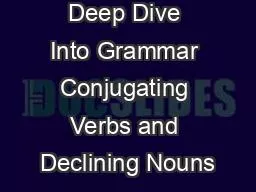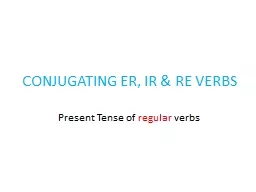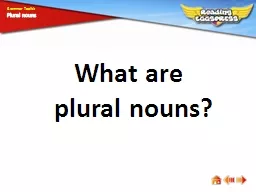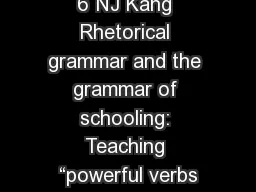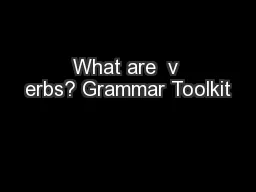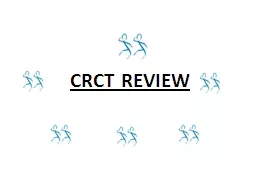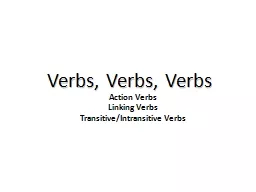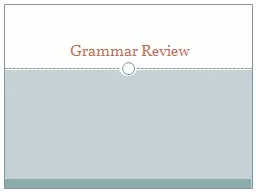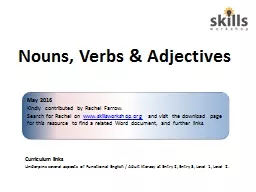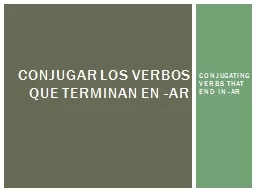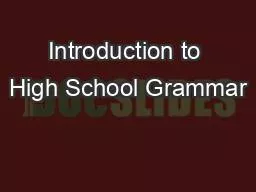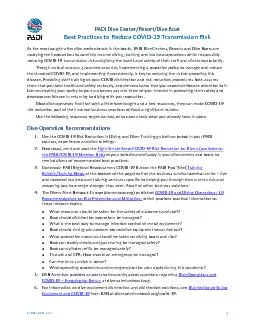PPT-Deep Dive Into Grammar Conjugating Verbs and Declining Nouns
Author : bikersnomercy | Published Date : 2020-10-22
Welcome To the Deep Dive I created this because the other PowerPoint was already way too long but I really wanted to provide more explanation for these different
Presentation Embed Code
Download Presentation
Download Presentation The PPT/PDF document "Deep Dive Into Grammar Conjugating Verbs..." is the property of its rightful owner. Permission is granted to download and print the materials on this website for personal, non-commercial use only, and to display it on your personal computer provided you do not modify the materials and that you retain all copyright notices contained in the materials. By downloading content from our website, you accept the terms of this agreement.
Deep Dive Into Grammar Conjugating Verbs and Declining Nouns: Transcript
Download Rules Of Document
"Deep Dive Into Grammar Conjugating Verbs and Declining Nouns"The content belongs to its owner. You may download and print it for personal use, without modification, and keep all copyright notices. By downloading, you agree to these terms.
Related Documents

